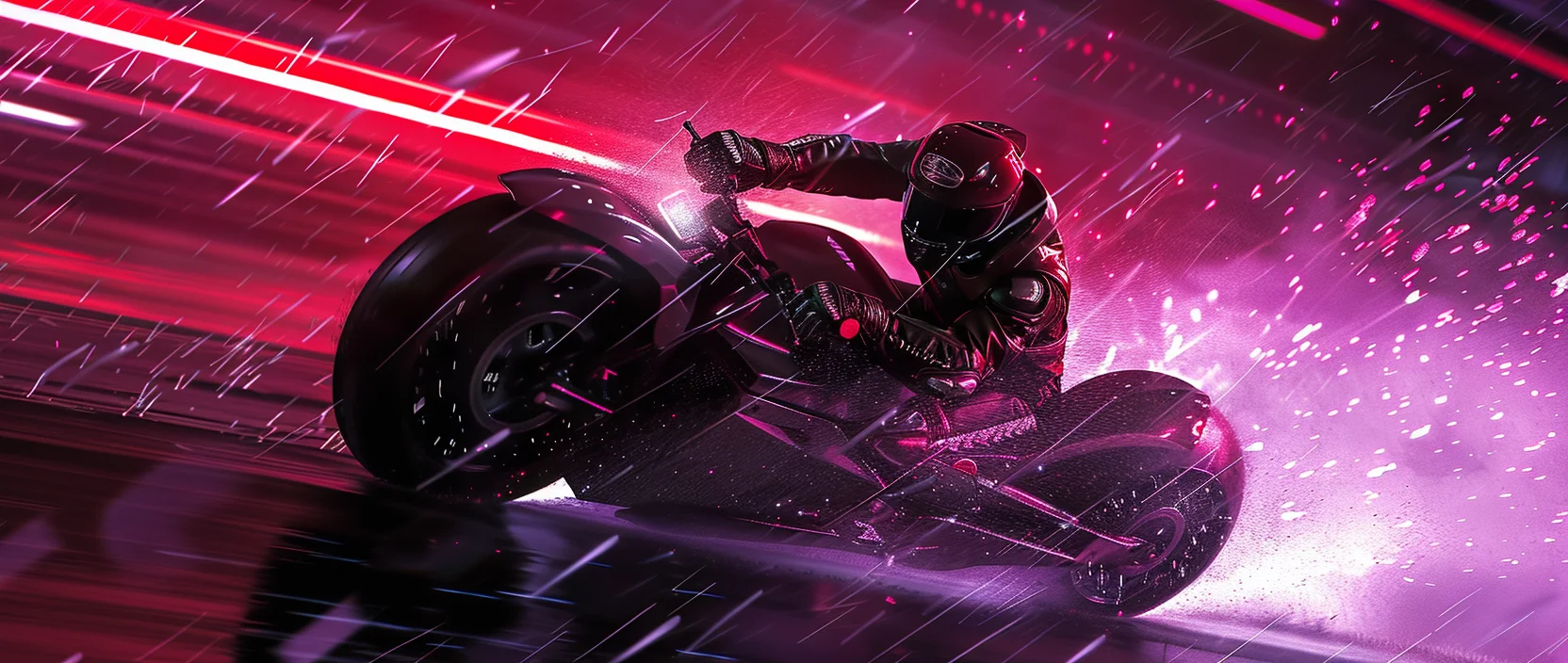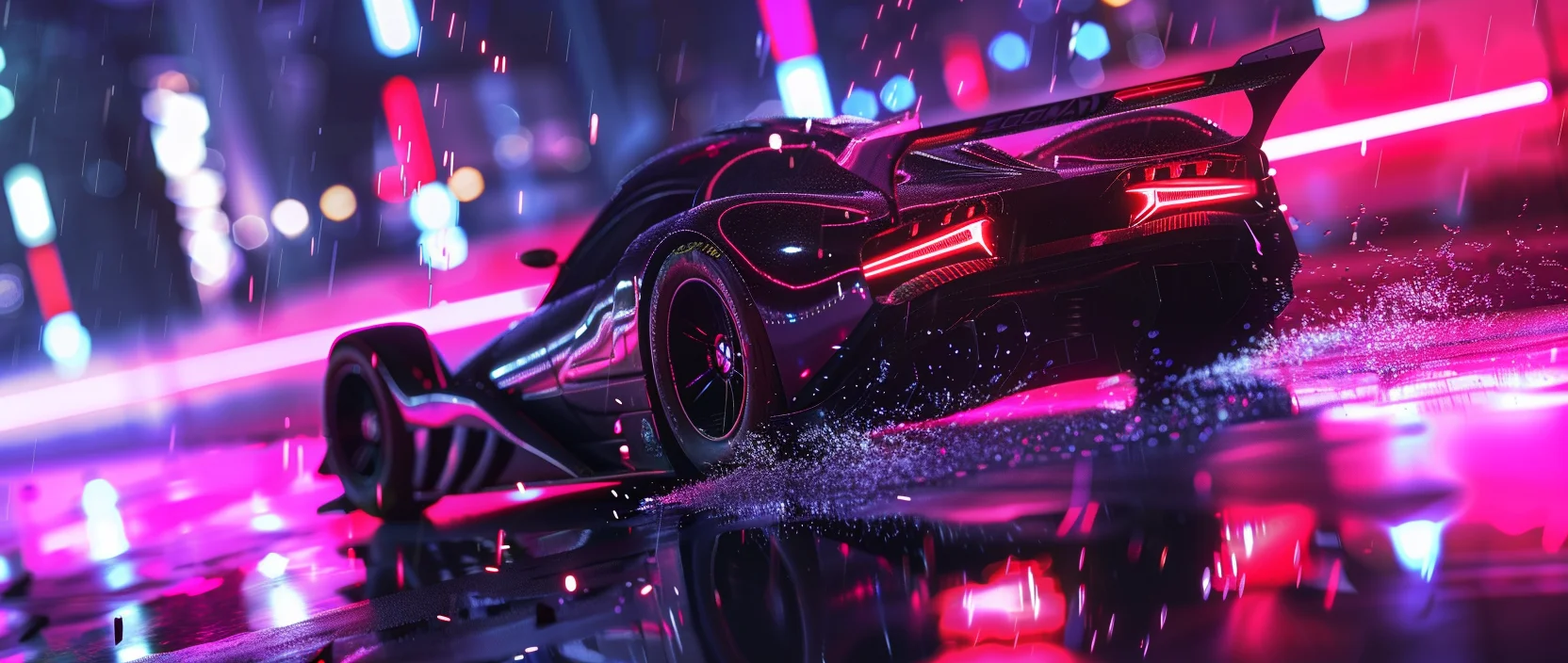Rumble Racing Star — an eccentric twist on kart racing where, instead of classic karts, you rocket across colorful tracks on space lawn mowers, competing, outsmarting rivals, and having fun. A free-to-play model, Web3 integration, NFT characters, and playful track items create a distinctive mix. In this article, we break down the core: mechanics, economy, social systems, and on-chain features to reveal what makes Rumble Racing Star tick.
Contents
- Overview and Concept of Rumble Racing Star
- Gameplay and Modes
- Systems and Economy
- Social Interactions in Rumble Racing Star
- Blockchain and NFT Integration
- Conclusion

1. Overview and Concept of Rumble Racing Star
Rumble Racing Star is a casual, accessible racer with a tongue-in-cheek B-movie vibe where players compete on eccentric lawn mowers. It blends humor, low entry barriers, and clear controls: core actions are mapped to the arrow keys, with boost and tricks on additional keys (Alt, Ctrl), letting newcomers quickly learn drifting and boost timing.
Developed by Delabs Games, the project rewards thoughtful strategy beneath its light-hearted surface: matching your character and mower to track features, using abilities and items with intent, and managing racing lines and boost energy all directly impact results. The visual style is deliberately exaggerated, tracks are dynamic and full of interactive elements, and the systemic design supports both short sessions and long-term progression.
The ecosystem includes social and Web3 layers: clubs, events, collectible items, and customization via digital assets. As a result, races move beyond a solo experience: players team up, climb leaderboards, enter tournaments, and engage with the economy without sacrificing arcade pace and accessibility.
2. Gameplay and Modes
Social mechanics amplify cooperation and competition: players form groups, share resources, set joint goals, and participate in events. This increases a sense of belonging and speeds up progression, complementing individual skill with team dynamics.
- Clubs — player groups for communication and coordinated progression. Clubs grant club points, sticker exchange, perks, and convenient in-group matchmaking. Club levels rise (up to 25), unlocking additional bonuses. Tips: join or create a club, participate in activities, complete weekly goals, and share drops with teammates.
- Community & Participation — a friendly, inclusive environment where player initiatives and feedback help shape upcoming features and events. The more actively you engage in events and discussions, the more influence you have on the project’s evolution. Tips: suggest ideas, vote on changes, join seasonal activities, and mentor newcomers.
Maximum impact comes from pairing club bonuses with steady participation in seasonal initiatives. For how these choices affect rewards and resources, see “Systems & Economy,” and for race formats revisit “Gameplay & Modes.” Consistent communication and team play build sustainable progress and broaden the range of available activities.
3. Systems and Economy
The Rumble Racing Star economy rests on four pillars: driver progression, vehicle attributes, a collectible layer, and premium activities. Standard races generate resources you convert into upgrades and access to more profitable formats. Sustainable growth comes from budgeting, risk assessment, and synergy between your driver and lawn mower.
- Drivers — ranks from Rookie to Master with unique abilities; defeats can result in losing a pilot. Tip: keep a reserve to recover key drivers.
- Vehicles (Lawnmowers) — standard and NFT models with varying speed, handling, power, and durability. Tip: build a core garage for your staple track types instead of spreading upgrades thin.
- Stickers (Sticker Book) — code/unlock collections and visual decals for meta progression and personalization. Tip: complete sets gradually without starving critical upgrade budgets.
- Currencies — silver (base), gold (rare purchasing power), tickets (premium entry), premium points (rewards). Tip: maintain a non-depleting reserve for garage upkeep and driver recovery.
- Premium Races & Star Garage — ticketed entry, rare drops, and potential cash-like rewards at higher risk. Tip: enter with a stable win rate and predefined ROI/loss limits.
Baseline strategy: farm resources in standard modes, stabilize a reliable driver pool, tune vehicles for meta tracks, and only then step into premium activities. Recheck upgrade ROI and event participation regularly— steady garage growth beats one-off sprints for rare drops.

4. Social Interactions in Rumble Racing Star
The social layer brings players together into durable communities and sets long-term goals beyond solo runs. Success hinges not only on piloting skill but also on coordination, resource sharing, teamwork, and seasonal participation. Clubs help newcomers find their rhythm faster while giving veterans tools to optimize progression and extract extra value from team synergy.
Well-structured collaboration reduces the “cost of error” in ranked races, simplifies finding training partners, and stabilizes results. Players distribute roles (captain, coordinator, mentor), align event schedules, trade duplicate stickers, and close weekly goals together. Below is a structured summary of the main social mechanics.
| Mechanic | What it is | What it gives | Progress / limits | Player actions |
|---|---|---|---|---|
| Clubs | Player communities for communication, resource sharing, and coordinated progression. | Club points, sticker trading, in-game perks, quick matchmaking, team support. | Club level increases (up to 25), unlocking additional bonuses; member activity affects pace. | Join/create a club, attend events, share duplicates, close weekly goals, mentor newcomers. |
| Community & Participation | Initiatives, seasonal events, collaborative activities, and developer feedback loops. | Friendly, inclusive atmosphere; influence on future features; extra tasks and events. | No hard level caps; progress is measured by contribution, consistency, and interaction quality. | Attend events, propose ideas, vote on changes, join discussions, support team initiatives. |
For best results, combine club discipline with regular seasonal participation. Practical steps: pick an active club with clear rules, align training schedules, centralize sticker exchanges, set weekly team targets, and assign roles. Clear communication standards improve retention and lower friction, which translates into more stable performance.
Team play complements both the economy and competition: club bonuses speed up progression, joint practice improves win rate, and community involvement grants access to extra activities and early information on upcoming changes. A systematic approach to planning turns social tools into a steady edge for both individual racers and entire squads.
5. Blockchain and NFT Integration
Rumble Racing Star is a Web3 ecosystem with on-chain ownership: items and progress belong to the player and can be stored, sold, and traded through compatible marketplaces with transparent provenance.
Day-to-day operations run on Polygon for fast, low-cost transactions. Some collections and access passes — for example, the Adventure Pass — are issued on Ethereum, providing early content access, exclusive items, and seasonal benefits.
Popular PFP collections are supported to enhance visual identity and customization without conferring gameplay advantages, preserving balance. Players can connect an external crypto wallet or create an in-game one; all actions are recorded on-chain and woven into meta-progression without pay-to-win.
6. Conclusion
Rumble Racing Star is a brisk, fresh take on kart racers, layered with strategy and wrapped in a Web3 ecosystem. Simple controls, a humorous aesthetic, and social play make it approachable to a broad audience. An economy spanning NFTs, tokenized tickets, and in-game currencies drives deep motivation and monetization options. Races evolve from routine contests into a lively, community-oriented space where everyone can contribute, have fun, and grow.
If you’d like to dive deeper into specific topics — NFT details, tokenomics, development strategies — say the word, and I’ll prepare focused materials.
For a quick start, use base modes to refine lines and boost timing, then gradually move into higher-stake premium formats. Joining an active club accelerates progression and simplifies seasonal participation, while thoughtful resource management expands your garage without unnecessary risk. Overall, the project blends accessibility, build depth, and a resilient economy, creating a rare balance for arcades where skill, strategy, and teamwork decide the outcome.






